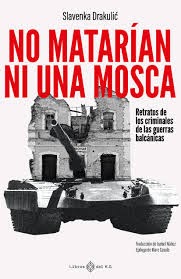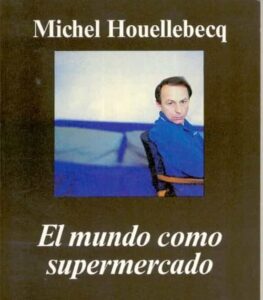
Títutulu Original: They wouldn’t even be ants to burn
Translation: Isabel Núñez
Year of publication: 2005
Valoración: Terrible and (precisely because of that) necessary
How a country that for forty -five years lived in harmony explodes in a thousand pieces and bleeds in a series of fratricidal wars? What leads to a seemingly peaceful accounting, taxi driver or nurse to become a war criminal? Are we talking about sadistic, opportunists, cowards, of convincing of the cause? Can specific circumstances and decisions make a normal guy able to kill and/or order murders? How is it possible for a society to lose its values and an individual loses their soul and admits evil? And what is even more disturbing, what would you have done in Vukovar, Bijeljina or Mostar between 1991 and 1995?
Maybe everything is reduced, as Biljana Plavsic said with some cynicism, to In our obsession for never becoming victims, we allow ourselves to become perpetrators. Or maybe it’s not all so simple.
Concepts such as memory and reparation, justice and truth, guilt and responsibility, the normalization of hate or dehumanization of the other travel as terrible as necessary in times when historical memory is questioned.
But do not expect to find answers in the book. There are more questions than solutions, more conjectures than certainty in the 13 portraits (+ the introduction, the final coda paradoxical and the epilogue of Marc Casals) that make up a book that is born from the author’s assistance to the trials of the International Criminal Court for The ancient Yugoslavia.
I think that one of the author’s main successes is to gather anonymous criminals with famous criminals, such as Slobodan Milosevic, Ratko Mladic or Frandjo Tudjman (which has no portrait but could have had it), because this covers several fronts that do not They are “stagnant compartments”: not only the passage from normality to blind violence but also the passage of anonymity to power positions And, above all, how it is achieved from being able to create a climate that ends up giving rise to such terrible events.
Another point in favor, and that contributes to this permanent sense of unreality to accompany the texts, are the parallels among some of the portrayed people and people from the nearby environment of Drakulic. For example, an innocent and naive butcher (who even his Muslim neighbors spoke well !!!) As Goran Jelisic shares generation with the author’s daughter; Radoslav Krstic brings to the mind to the author’s own father, military in the Yugoslav army; Biljana Plavisc, number 2 of the Government of the Republic Srpska, reminds him of his own mother …
And of course, if people with whom we share generation, training, work or culture, if your neighbor of 4th B or your desktop in 3rd of EGB ends up becoming a monster, perhaps you have been very close to being and only a coincidence He has avoided it (or you have seen it, but you have let it run (or a shit has imported you) …) …
More. Drakulic does not go into rugged details. That is not what matters, horror is not shown through blood or viscera. The terrifying does not come from vampires or deforms and perverse beings, but of what is already known.
Finally, the book admits possible readings that go beyond the “merely philosophical and/or psychological.” The individual stories of the different characters are so powerful that they admit a reading as simple “stories”, whether as horror stories, absurd or (even if it seems) surreal. In addition, the parallels that the author said among the protagonists of the texts and people close to her make the book go back in time and offer a reading that we could call “Yugoslav Chronicles.” Perhaps this way could be accessed, even if only in part, to a possible explanation of what came later.
In summary, a hard and uncomfortable book but absolutely necessary, not to learn from the past and not incur the same errors (we have already stumbling on the same stones) but, at least, so that memory, truth, justice and repair occupy The foreground.
PS 1: This year is the 30th anniversary of the Srbrenic Matanza (also of Dayton’s agreements). In case you have not seen it, there is a very interesting movie on the subject: ¿Where are you going, Aida?
PS 2: The book was published in Spanish in 2008. In this 2025, KO books recovers it and includes the aforementioned epilogue of Marc Casals and foot notes updating the situation of some of the types that appear in the text.
Source: https://unlibroaldia.blogspot.com/2025/02/slavenka-drakulic-no-matarian-ni-una.html


